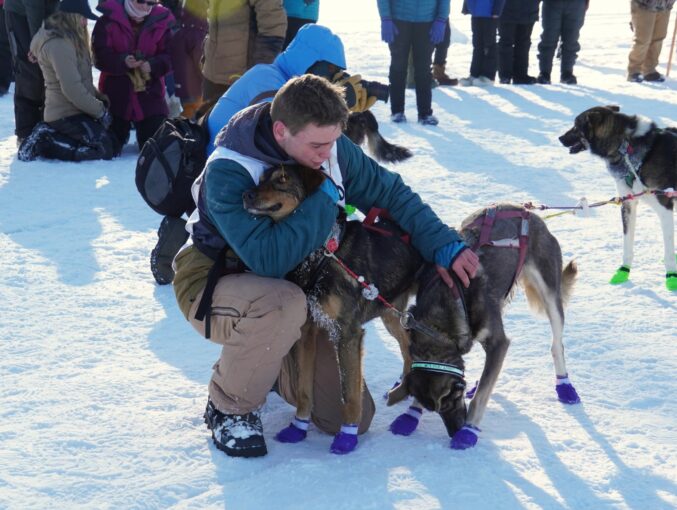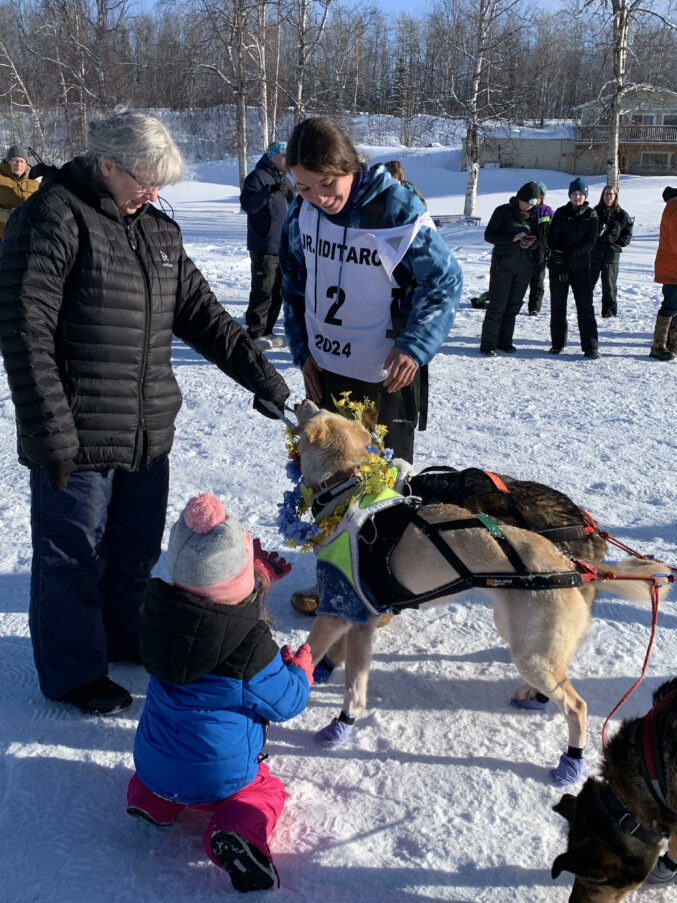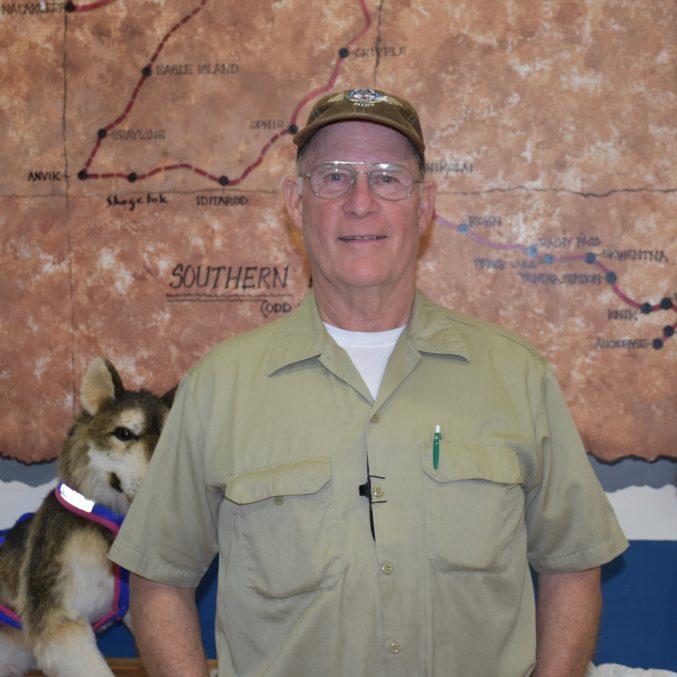All along the Jr. Iditarod Trail this past weekend, I learned to approach people, ask a question appropriate to the circumstances, and then ask follow-up questions. Doing so resulted in many amazing conversations with all kinds of people. If you knew me when I was in high school, you would have been shocked—I was known as the shy girl who never talked to anybody. Your students need the skill of opening a meaningful conversation as much as I did, and sometimes still do.
As teachers, we are trained to ask questions, especially to determine a student’s emotional level and ability to learn. But to what extent do we explicitly train students to ask questions and learn about other people?
My district has adopted the Leader in Me program for all students. This concept is based on Stephen Covey’s Seven Habits of Highly Effective People. Appropriately, our February habit is Seek First to Understand, Then to Be Understood. Of this habit, Stephen Covey says, “‘Seek First to Understand’ involves a very deep shift in paradigm. We typically seek first to be understood. Most people do not listen with the intent to understand; they listen with the intent to reply. They’re either speaking or preparing to speak. They’re filtering everything through their own paradigms, reading their autobiography into other people’s lives.”
The last sentence is really important: we often listen to others so we can respond by telling our own experiences. I already know my own experience. What I want to learn about is others’ stories. Inherently the Jr. Iditarod and Iditarod are people-heavy events. All kinds of people come to work, watch, participate, and help. I am never in a room without people during the day (and at night on the trail!). My job is to learn, and in order to do that, I have to ask questions. Friday at the musher meeting, Saturday on the trail and Sunday at the Eagle Quest checkpoint, I learned so much about the Jr. Iditarod and the people who are invested in it.

Morgan Martens, 2nd place Jr. Iditarod finisher, hugs his lead dogs. Photo: K. Newmyer
For example, at the musher meeting, I sat next to the mother of Morgan Martens, this year’s second place finisher. Only, I didn’t know that, I learned after asking, “who are you here to support tonight?” That is one of many questions I keep in my back pocket. She told me how proud she was of him but also confessed to a small amount of worry. I asked a follow-up question, and we talked on and off until the bib draw began. She has watched Morgan work hard at track and mushing in his life and she knew that he would approach this race with every ounce of effort. We connected again at the banquet afterward. I told her I appreciated her perspective as a mom, watching Morgan shave off almost all the time separating him from the leader by helping his dogs. Other moms that I shared conversation with at Eagle Quest, the finish line, and the banquet were Arien Sanderson’s mom and the mother of AddieAnn Randall, who won Rookie of the Year. They were gracious in sharing the stories of their amazing teens.

2024 Jr. Iditarod 10th place finisher Arien Sanderson with her mom and niece. Photo: K. Newmyer
On Sunday morning, after a frigid pre-dawn snowmachine ride back from Yentna, I stopped into the café at Eagle Quest to get a cup of coffee and warm up while waiting for the mushers to come back through the checkpoint. The room only had spots at tables where people were already sitting, so I asked a table of three, “may I join you?” After introductions, I asked another of my scripted questions, “are you here to support the race?” It turned out I was sitting with Kirsten Stanley and her husband Barry, along with Ola Williams, who has been working Jr. Iditarod statistics and updates for many years. Kirsten and Barry live in the area and come to the café every Sunday for breakfast. Kirsten was a kid when she ran the Jr. Iditarod, back when it had two divisions, one for teens and one for younger mushers. She told me that the race for the kids went to Nine-Mile Hill and back for a total of 18 miles. She ran the Jr. Iditarod five times, but after the fifth time, she was ready to hang up her musher’s bib. She and her husband Barry, who ran a trap line with dogs for many years, shared additional Iditarod stories from their life. Kirsten worked the Iditarod at the Rainy Pass checkpoint, where she was also a caretaker for the lodge. She always made sure it was she that made Joe Redington, Sr.’s breakfast when he came through on his nineteen Iditarod races. This is the kind of story that you get when you ask questions, and then listen.
At vet checks, I asked many Jr. mushers, what are you most looking forward to?–another of my scripted questions. After the race, I asked them, what was your favorite part? Most answered, the scenery, the time with dogs, and most importantly, time with each other bonding and sharing their mushing journeys together. Knowing which question will open a good conversation takes a bit of keen-eyed observation. Look for patches, pins and shirt logos that might tell you about the person before you approach them, and then you can ask just the right question that will help them open up about their own life experiences. At the banquet, a gentleman approached me and before he spoke, I knew that he was an Iditarod Air Force pilot because of the logo on his hat. It turned out to be Joe Pendergrass, who flew for the Iditarod for many years, and always enjoyed flying teachers. (He said Andrea “Finney” auf der Heyde was his favorite!) Knowing he was a pilot enabled me to ask questions about his experience flying dogs and people for the Iditarod right away.

Joe Pendergrass of the Iditarod Air Force. Photo: Iditarod Media
Asking questions is a strategy that can be applied to any content. Pretend you were having a conversation with a literary character. What questions would you ask, and what would the answers be? Imagine speaking to a scientist whose work you are studying. A great question might be, What motivated you to get into your field of study? (When my son was little, that was his go-to question.) Find out why your colleagues are passionate about teaching. Learn what your students are interested in. You can even have students create an “interview” with a historical figure. Helping students create an interview-format podcast—Husky Talk from 2015 Teacher on the Trail Erin Montgomery and her students is a great example of student work. Teach students how to have several scripted questions up their sleeve in order to start meaningful conversations.
I learned from my time on the Jr. Iditarod trail that there really are no strangers in the mushing community. Everyone is very eager to talk and share stories. I gained a wealth of information over the last two days that enhanced my experience immensely. I am coming away from the Jr. Iditarod with so much knowledge that I would not have if I hadn’t let go of my “shy girl” past and learned to ask total strangers questions that start conversations.
What questions can you teach your students to ask in order to learn from the people around them? Email me at emailtheteacher@iditarod.com.


